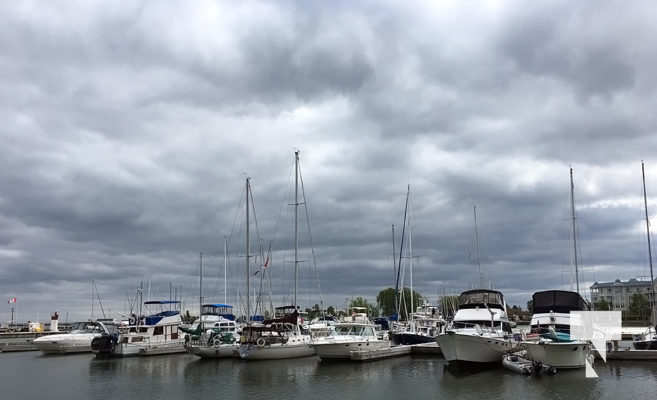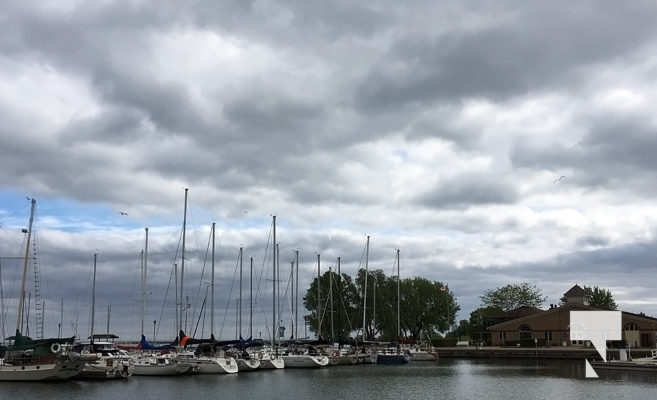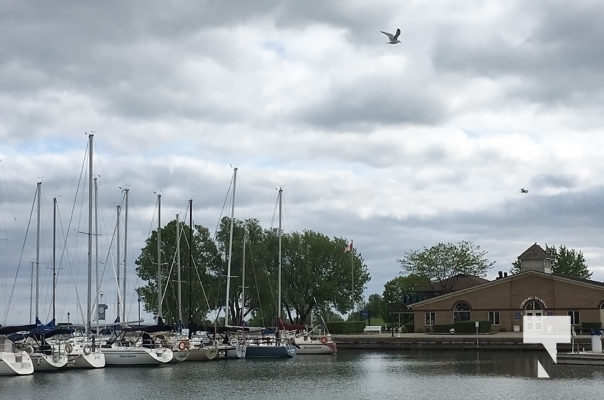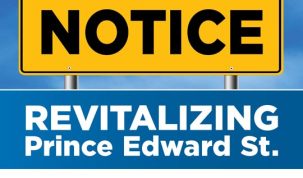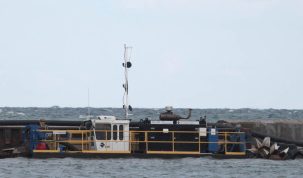Cecilia Nasmith/Today’s Northumberland
Ever since the Town of Cobourg formed its recreation and culture division two years ago, the Waterfront User Needs Assessment and Detailed Deisgn Plan has been a priority, director Dean Hustwick said at council’s committee-of-the-whole session Monday.
The final report, presented by Mike Tocher of Thinc Design and Mary Catherine Mehak of Mehak, Kelly and Associates Inc., contained 83 separate recommendations grouped into 24 projects to be rolled out over 24 years. But Hustwick stressed that council will make all the if-and-when decisions throughout.
“Cobourg has been a popular tourism destination since before Confederation, and this has helped build this community by attracting new residents, supporting businesses and generating revenue,” Hustwick said.
“There is a strong majority belief that it is important and should be leveraged to generate additional revenue.”
Dating back as far is the record of a busy Cobourg harbour built for big ships and ferries, he noted. This infrastructure must be maintained, as has been brought home by the recent closure of the east pier. The $50,000 it will cost just to get a report on what to do about it is one small indication of costs that will fall into taxpayers’ laps unless they can be defrayed by enhanced waterfront revenue.
At present, the marina is self-sustaining. In the five years leading up to 2017, he said, these revenues covered all harbour expenses and generated a $387,000 boost to the marina reserve. Meanwhile, the estimated economic impact from recreational boaters over the first four years of that period is estimated at more than $12-million.
The study has shown that transient-boater slips are more profitable than seasonal-boater slips, Hustwick continued. Over the last couple of years, the 68 transient slips have generated $155,000, while the 150 seasonal slips have brought in $272,000 – an average of $2,300 per transient slip versus an average of $1,800 per seasonal slip.
“This report has a full business analysis for the marina, with findings and recommendations that the marina is profitable and capable of paying for services, including the (proposed) boat lift.”
Hustwick was amazed the boat-lift purchase could cause so much controversy, when council purchased its own dredger in 2009 for $615,000 with hardly a ripple. And $109,000 of that came from the boaters through the marina reserve, he added.
The campground has also been profitable, Hustwick pointed out, adding $881,000 to the town’s general revenue over the past few years to help keep taxes down.
Tocher stressed that the plan is a living document, which must be viewed as changeable and adaptable in future years. In accepting the plan, he said, council commits to nothing.
Still, Mehak said there is a solid base of support for an active harbour and waterfront that caters to a variety of users, with amenities paid for by means other than increased taxes.
Recommendations are broken down into certain major areas, and they addressed the most important ones first.
For the west beach and headland, they want the headland enhanced as a passive naturalized area and the west harbour enhanced, with slips added on the west side of the pier.
“We firmly believe there is a compromose situation which can be found to acommodate all users of the harbour,” Tocher insisted.
The marina is an efficient and profitable asset that can be leveraged for enhanced revenue, and there’s a strong business case for more slips and the boat lift (especially since the Cobourg Yacht Club has said it will no longer run its own boat-lifting operations). Reconfigured boat storage is suggested, as is a big-ticket item – a community waterfront building that can serve as a community facility and possibly a waterfront restaurant. But this is a long-term suggestion, Tocher said.
The east pier can still be used for a wide range of events and activities once necessary remediation is done, and there’s revenue potential through leased dock space and vendors.
“The pier is an iconic element of Cobourg’s harbour, and really is worth the investment, even if it is a long-term vision,” Tocher said.
The Victoria Park beach always brings up the question of balancing all user groups, as well as the awareness that a lot of its facilities need upgrading.
The campground needs some of its deteriorating facilities addressed, and a basic reconfiguration to create a buffer between the grounds and the boardwalk. Tocher believes this will minimize some of the negativity some feel for the facility.
Victoria Park is a popular site for events, and people generally feel this should cotninue. However, the park infrastructure needs improvements – the inadequate power-source facilities are a major reason Christmas Magic in Cobourg moved out of this location.
Parking and traffic management affect many residents, including those who live near the waterfront. Tocher suggests zone rates (wherein parking closer to the beach costs more, for example), plus designated pick-up and drop-off zones where parking is prohibited.
Waterfront linkages and connections require a strategy for access across private land to develop pedestrian links between the east and west waterfront areas.
Other waterfront parks and open spaces were studied, but have a lower priority and more of a neighbourhood focus than the higher-profile areas.
An average annual investment of about $1-million over 24 years should take care of it, Tocher said, and about half the entire budget is accounted for by two big-ticket items – the community waterfront building and a downtown parking structure.
“Approving this plan includes engaging the community in developing the final details for every capital project,” he said.
“Future councils will determine if, when and how projects are implemented.”
Recalling his council days from the 1980s, when the whole north wall of the harbour was a cinder track, Mayor Gil Brocanier affirmed the importance of a vision.
“It’s a very good, strong road map of where we want to go into the future if we want the next generation of Cobourg to have all the advantages we have today,” Brocanier said.
A motion by Deputy Mayor John Henderson resulted in a council vote to accept the document being deferred to July 3 – just to allow a final kick at the can for anyone who has any further input. The document had just been released in final form Friday, he said, and time must be allowed for all interested parties to have a thorough review.


